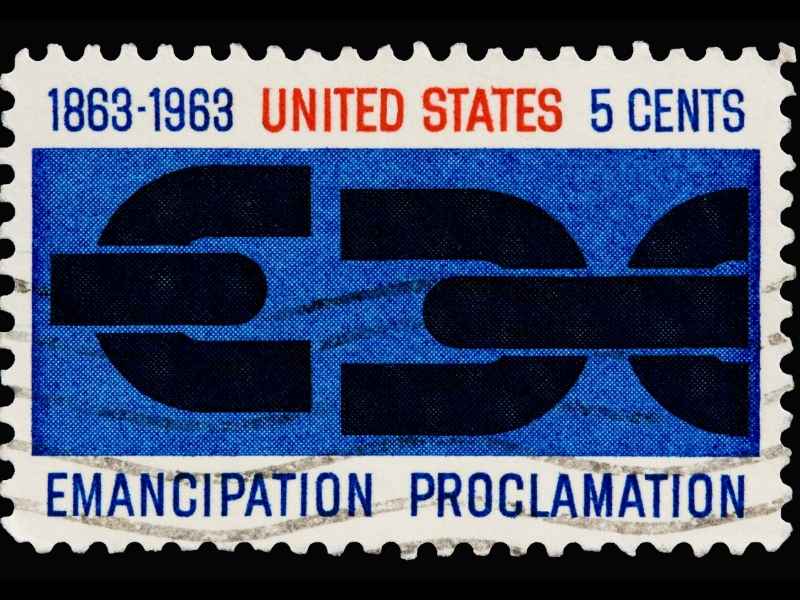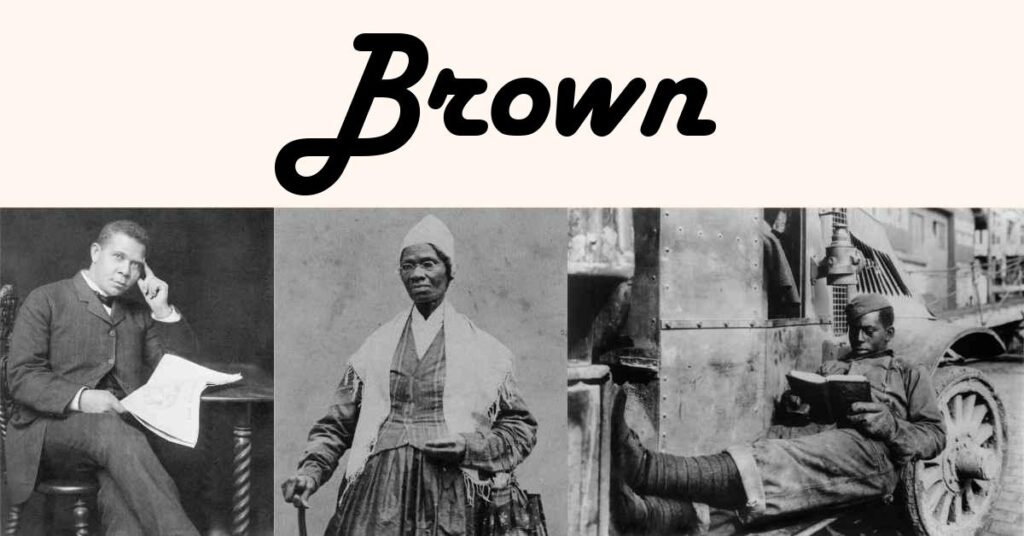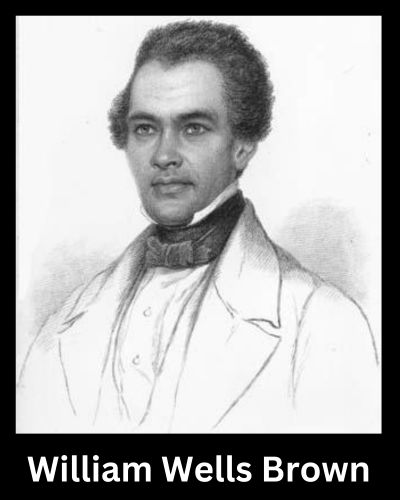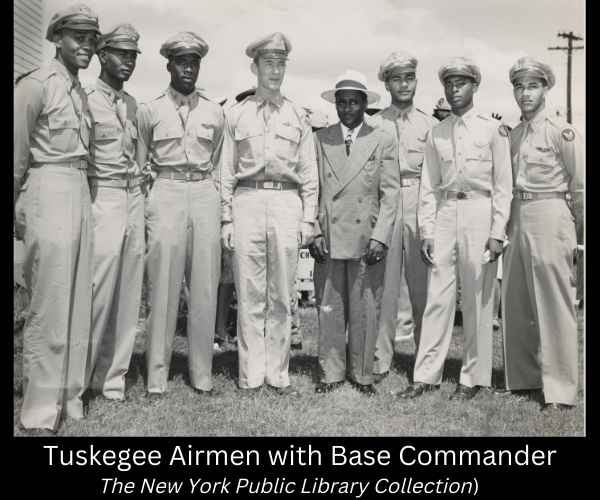There were 511,581 black Americans with Brown as their last name in the 2010 U.S. Census. This was 36% of the total number with that name in the country.
This article looks at:
- 19th and early 20th-century black census numbers for the name
- notable African American people named Brown
- early black military records and how to find them
Brown Before The Civil War
The 1850 census was the first to record all free members of households together. Before this, people who were not white were not named in the federal census.
In 1850, there was a box to enter color on the census. It was left blank to denote white, b for black, or m for mulatto. The third term is the language of the time. I will use mixed in the rest of this article.
If you are researching your Brown ancestors in census archives, be sure to search under both categories. The census takers sometimes made their own judgment. Do not rely on them always being right.
1850 Federal Census
There were 6,022 people named Brown who were recorded as black in the 1850 census. 1,730 were recorded as mixed.
Because they are in the main federal census, these are free citizens.
There was a total of 145,595 free citizens named Brown that year.
1860 Federal Census
The 1860 federal census recorded 2,362 people named Brown as black, and 2,362 as mixed.
That is out of a total of 181,853 free citizens.
Of course, census-taking would change after the Civil War.
After The Civil War

The 1870 census was the first after the Civil War and the Emancipation Proclamation. At last, all African Americans are included.
Those who were omitted in 1860 because they were enslaved are now in this census. Here are the numbers: 64,024 people named Brown were recorded in the 1870 census as black and 8,757 as mixed.
The increase is clear. The overall total (all Americans) was 288,491.
The 1880 census recorded 86,872 as black and 14,259 as mixed out of a total of 355,241.
Now we jump to the end of the 19th century – or the beginning of the 20th.
Brown In The 1900 And 1940 Census
In 1900, the mixed category was dropped. However, not all enumerators followed those instructions. I have found a small number of records where “m” was still used in the box for color.
I will focus here on the black numbers.
The 1900 census recorded 135,317 people named Brown as black within a total of 489,197.
There were 192,616 people named Brown recorded in the 1940 census as black within a total of 756,024.
Historic Black Figures Named Brown

Here are short biographies of historic figures with the Brown surname.
William Wells Brown
- Born: About 1814
- From: Lexington, Kentucky
- Died: 1884
William Wells Brown was born enslaved. He was hired out to steamboats on the Missouri River and escaped when he was twenty (in 1834) by fleeing when his boat was moored in Cincinnati. A Quaker named Wells Brown helped him, and William took the surname as his own.
Brown continued to work on steamboats on Lake Erie and smuggled many fugitives to freedom. He was a noted pro-abolitionist speaker in Buffalo, New York.
He traveled to Great Britain in 1849 to lecture against slavery and drum up support for U.S. abolitionists. Brown had already published his memoirs in 1847.
While in Britain, he published a novel titled “Clotel, or, The President’s Daughter: a Narrative of Slave Life in the United States”. This was a fictional account of two mixed-race children of Thomas Jefferson and a slave.
It was published in 1853 in London. This makes it the first known published novel by an African American.

Other Early Novelists
The first African American novel may still be undiscovered. However, these novelists are known to have been published in the United States:
- Frank Webb – published in 1857
- Harriet Wilson – published in 1859
- Julia Collins – novel serialized in a newspaper in 1865
Henry Brown
- Born: 1815
- Died: 1897
- From: Louisa, Virginia
Henry “Box” Brown was born on a plantation and sent to work in a tobacco factory in Richmond, Virginia. When his wife and children were sold to a plantation in North Carolina, he became determined to achieve freedom.
Henry arranged to have himself hidden and shipped in a wooden box from Richmond to abolitionists in Philadelphia. The trip took 27 hours by wagon, train, and steamboat. He was helped in St Louis by a radical group called the Knights of Liberty, co-founded by the black abolitionist Moses Dickson.
If you’re interested in a full account by another prominent black abolitionist who helped him, we have an excerpt from the chapter on Henry Box Brown in William Still’s book on the Underground Railroad.
The Underground Railroad was a vast network of secret routes and safe houses organized by many abolitionists and rights activists. It helped thousands of enslaved people escape from the South.
This illustration from the book depicts the moment when the helpers open the box to release Henry:

Other Browns On the Underground Railroad
Henry wasn’t the only Brown to feature in Still’s book with a daring escape.
Robert Brown risked his life by swimming a horse across the Potomac River on Christmas night. His escape in 1856 took him from Martinsburg, Virginia, to the underground railway stop in Philadelphia.
His testimony to the Philadelphia Committee is memorable. You can find it in our excerpt on Robert Brown in the Underground Railroad.
Anthony and Albert Brown were owned by oystermen in Norfolk, Virginia. They escaped by sailing an oyster boat to freedom. Read more in our excerpt of an escape by oyster boat to the Underground Railroad.
Willa Brown
- Born: 1906
- Died: 1992
- From: Glasgow, Kentucky
Willa Brown was one of the first African American women to secure a pilot’s license (she did so in 1938).
She co-founded the Coffey School of Aeronautics to train black pilots. Nearly two hundred became Tuskegee Airmen, the famed black flying unit in WWII. We have more about these pilots later.
Brown was a strong advocate for the integration of the Army Air Corps. She became the first black officer in the Civil Air Patrol when appointed Lieutenant in 1942.
Bessie Coleman was another pioneering black aviator. She had to go to France in 1920 to train as a pilot. Working as a stunt pilot, she died in a crash (as a passenger) in 1926.
Marie Van Brittan Brown
- Born: 1922
- Died: 1999
- From: Queens, New York
If you have a home security system, you are benefiting from the pioneering invention of Marie Van Brittan Brown in in the 1960s.
Marie was a forty-year-old nurse when she invented a safety system for when she was alone in her house at night. Her electrician husband helped her devise a system of peepholes, cameras, and microphones.
This allowed he to see and speak to people outside before admitting them.
Marie’s name was the first on the patent application in 1966, her husband was second. She later added a mechanism to alert police remotely.
The whole system is considered to be the first closed-circuit TV security installation.
Other black inventors
Check out these other early African American inventors.
Minnijean Brown Trickey
- Born: 1941
- From: Little Rock, Arkansas
Minnijean Brown grew up in Little Rock where she attended the segregated black Horace Mann High School.
At the time, the local branch of the NAACP, under the leadership of Daisy Bates, was forming a small group of black students to be the first to desegregate a Little Rock school.
Minnijean was one of nine students who volunteered to enroll at the white Little Rock Central High in 1957. This group became known as the Little Rock Nine.
On the first day, the Governor sent the National Guard to prevent their entry. President Eisenhower intervened and sent troops to enforce the court order of desegregation.
On the second day, the children also faced hostile crowds who gathered outside the school. They entered class and became the first students to integrate Little Rock Central High.
However, the white students verbally and physically harassed the students inside the school. Minnijean wasn’t the type to back away.
When a bunch of girls threw a bag filled with locks at her, she yelled back at them. Despite the torrent of verbal abuse she had received at the school, Minnijean was expelled for calling her assailants white trash.
She went on to graduate from high school in New York.
Members of the Little Rock Nine
Here are some of the members:
Brown In African American Military Records
You may be surprised at the amount of genealogy information available from military records.
Here are some examples of the Brown surname from three different military services:
- Buffalo soldiers
- Black civil war soldiers
- Tuskegee airmen
Buffalo Soldiers
Five regiments for black soldiers were formed during the Civil War. They were known as the Buffalo Soldiers.
Their records are part of the national archive of military monthly returns. The information includes the year and place of birth, where they enlisted, their occupation, and their height.
Here are black soldiers of the 25th Infantry. Some are wearing buffalo robes.

One of the earliest entries for Brown was in 1866.
John Brown was a Private in the Tenth Cavalry. He was stationed in 1866 at St Louis, Missouri.
One of the last entries was in 1914. William Brown was a Corporal in the Ninth Cavalry that year.
If you want to do your own research, there is a free index of these military records on Ancestry.com and FamilySearch.org.
Black Civil War Sailors
Two African American navy sailors named Brown were awarded the Congressional Medal of Honor for their actions during the Civil War.
William H. Brown was awarded the medal for his bravery during the Battle of Mobile Bay in Alabama in 1864.
This was the citation:
“On board the U.S.S. Brooklyn during successful attacks against Fort Morgan rebel gunboats and the ram Tennessee in Mobile Bay, on 5 August 1864.
Stationed in the immediate vicinity of the shell whips which were twice cleared of men by bursting shells, BROWN remained steadfast at his post and performed his duties in the powder division throughout the furious action, which resulted in the surrender of the prize rebel ram Tennessee and in the damaging and destruction of batteries at Fort Morgan.”
Official citation
Wilson Brown was born into slavery in Natchez, Mississippi. In the same battle as William above, a Confederate shell exploded on his ship. Four men were killed, while Brown was knocked to the below deck.
When he recovered consciousness, he returned to his post. You can read a fuller account at the Navy Museum website.
More black medal recipients
Here are some more black naval servicemen who were awarded the Medal of Honor:
- Aaron Anderson at Chesapeake Bay
- Thomas English on the U.S.S. New Ironsides
Researching black naval history
The National Parks Service has a free archive of African American sailors during the Civil War.
The information includes their age, height, rank, occupation, and where and when they enlisted. It also includes every ship that they served on.
You can search the database on the National Parks website.
Samuel Brown
One of the earliest entries for the surname concerned Samuel Brown from Norfolk, Virginia. He enlisted in 1861 aged 23.
His occupation before enlisting was as a Barber. His naval rank was Landsman.
“Landsman” was the lowest rank at the time and was given to recruits with little sea experience.
Dansey Brown
One of the later entries was for a sailor who enlisted in 1864. Dansey was aged 26 and was from Baltimore, Maryland.
His occupation before enlisting was as a Cook. His naval rank was Seaman.
A seaman in the Navy is a sailor who is not an officer.
Tuskegee Airmen
The Tuskegee Airmen were military personnel who served at the Tuskegee Army Airfield or related programs.
Nearly one thousand black pilots graduated from the Tuskegee Institute. They flew single-engine fighter planes or twin-engine bombers. 352 fought in combat.

James Brown graduated as a 2nd Lieutenant from the Tuskegee Institute in 1944. He qualified as a bomber pilot. James was from Detroit, Michigan.
Roscoe Brown came from New York, New York. He trained as a fighter pilot and graduated as a 2nd Lieutenant in 1944.
His combat credits said:
Downed 1 Me-262 on March 24, 1945; Downed a Fw-190 on March 31, 1945
This means that Roscoe Brown shot down two planes in March 1945.